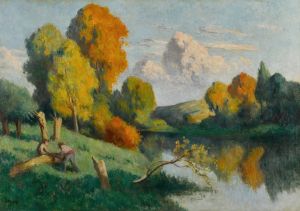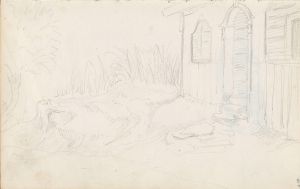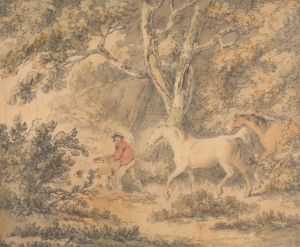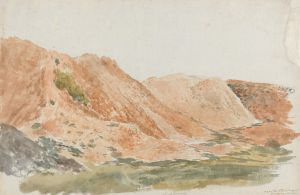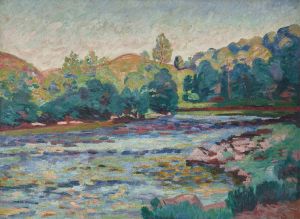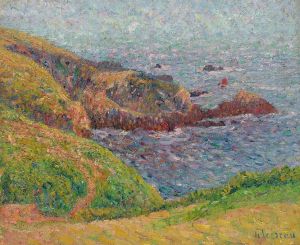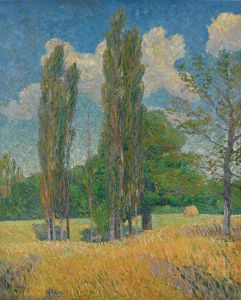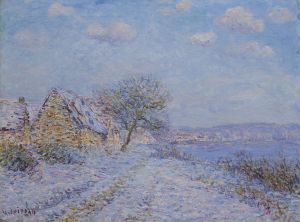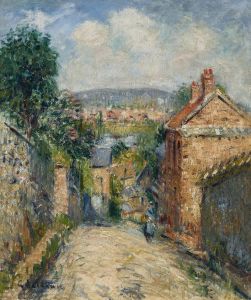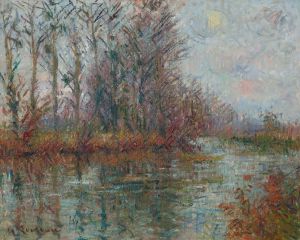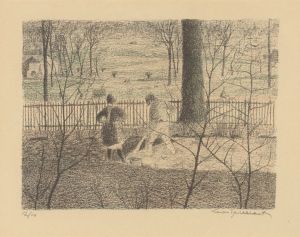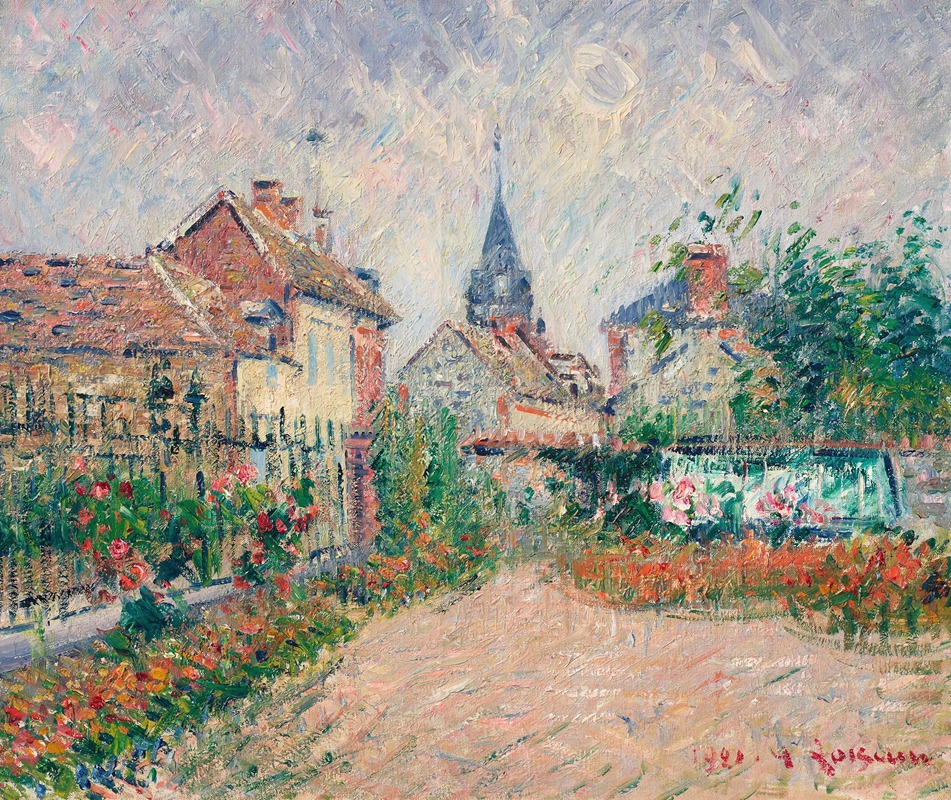
Vue de Saint-Cyr-du-Vaudreuil, Eure
A hand-painted replica of Gustave Loiseau’s masterpiece Vue de Saint-Cyr-du-Vaudreuil, Eure, meticulously crafted by professional artists to capture the true essence of the original. Each piece is created with museum-quality canvas and rare mineral pigments, carefully painted by experienced artists with delicate brushstrokes and rich, layered colors to perfectly recreate the texture of the original artwork. Unlike machine-printed reproductions, this hand-painted version brings the painting to life, infused with the artist’s emotions and skill in every stroke. Whether for personal collection or home decoration, it instantly elevates the artistic atmosphere of any space.
Gustave Loiseau (1865–1935) was a French Post-Impressionist painter known for his landscapes and scenes of rural life. He was associated with the School of Paris and was particularly noted for his ability to capture the changing effects of light and atmosphere in his works. Loiseau's technique often involved the use of short, brisk brushstrokes, which contributed to the vibrant and dynamic quality of his paintings.
"Vue de Saint-Cyr-du-Vaudreuil, Eure" is one of Loiseau's many landscape paintings, showcasing his affinity for depicting the French countryside. Saint-Cyr-du-Vaudreuil is a commune in the Eure department in the Normandy region of northern France. This area, with its picturesque scenery and tranquil environment, provided ample inspiration for Loiseau's work.
Loiseau's paintings often reflect his deep appreciation for the natural world and his keen observation of the subtleties of light and color. In "Vue de Saint-Cyr-du-Vaudreuil, Eure," he captures the essence of the rural landscape with a focus on the interplay of light and shadow. The painting likely features elements typical of Loiseau's style, such as a nuanced color palette and a composition that draws the viewer into the scene.
Throughout his career, Loiseau was influenced by the Impressionist movement, particularly by artists like Claude Monet and Alfred Sisley. However, he developed his own distinctive style, characterized by a more structured approach to composition and a focus on the rhythmic patterns found in nature. His work often includes elements of both Impressionism and Post-Impressionism, bridging the gap between these two important art movements.
Loiseau's dedication to capturing the essence of the French landscape is evident in his extensive body of work. He traveled extensively throughout France, painting scenes from various regions, including Normandy, Brittany, and the Île-de-France. His paintings are celebrated for their ability to convey the mood and atmosphere of a particular place and time.
"Vue de Saint-Cyr-du-Vaudreuil, Eure" is a testament to Loiseau's skill as a landscape painter and his ability to evoke a sense of place through his art. His work continues to be appreciated for its beauty and its contribution to the Post-Impressionist movement. Today, Loiseau's paintings are held in various public and private collections, and his work is studied and admired by art enthusiasts around the world.
While specific details about "Vue de Saint-Cyr-du-Vaudreuil, Eure" may not be extensively documented, the painting remains an important part of Loiseau's oeuvre, reflecting his passion for the French countryside and his mastery of capturing its ever-changing beauty.





